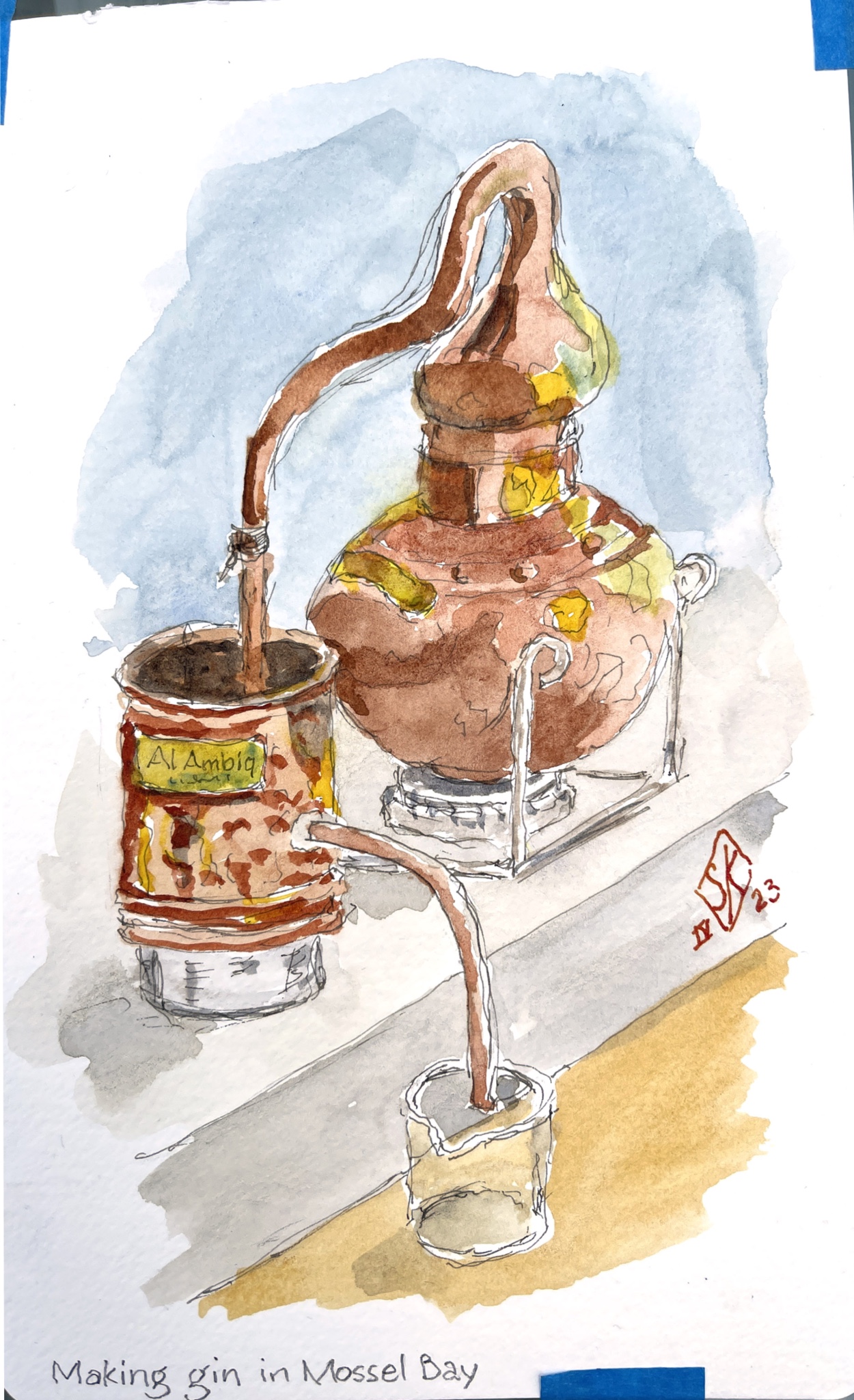DAY 83 Friday, April 9.
After a day at sea we anchored in Mossel Bay.
GIN
“Mother’s milk” some once called it in the poorer parts of London. Wikipedia reports it as “the national alcoholic drink of England.” Also, since 2013 it has grown in popularity around the globe. Mary and I have always liked the stuff, so when Mary found a class in actually making it she signed us up for one when we stopped in Mossel Bay.
A few words about Mossel Bay. It’s a city in a bay of the same name. It has about 60,000 inhabitants and sports a Mediterranean climate.
Like the rest of the world, during the COVID pandemic its economy suffered terribly. In the middle of it, about two years ago, a group of enterprising men came up with the idea of starting a distillery. They reckoned they could make gin using locally grown ingredients (one is a farmer) and local talent, and provide a living not only for themselves but for the community at large. Even their bottles are made using local clay.
The company is called Cape Saint Blaize Artisanal Distillery, after an earlier name for Mossel Bay, and they make three distinct styles of gin: Citrus, in the London Dry style, Floral, their most popular, and Ocean, an herbal style with a light amber color. The distillery itself, including the columnar still and the bottling plant, is incredibly just a five-minute walk from the pier.
More importantly, the other side of their building houses an excellent bistro where they can hold tastings. They have made the most of their opportunity by addressing the tourist trade, hosting events like the gin-making one we booked.
Their showroom contains 24 stations in three double-sided rows, like a college chemistry lab, only more comfortable. Each station has it own still.

Making gin involves multiple distillation steps. The final one is to impart flavors. This is what we were to do: 1) Choose one of the “mothers,” Citrus, Floral, or Ocean. 2) Pour a quantity of that mother into our still along with a cheese cloth packet of the basic gin flavors, Juniper, coriander, cassia, and angelica root. 3) Add 10ml samples of any four of the about 20 flavoring agents they provide (I chose spekboom and buchu, two African botanicals that were new to me, and two favorites, cardamom and chili. And 4) reassemble the still.
Mr. B, the partner who conducted our class, then lit the burners under our stills, and we made our very own gin! 500ml of it.
Mary’s—flavored with lemon, ginger, pink peppercorns, and chili—tastes better than mine, I have to admit.
Next: Safari!
